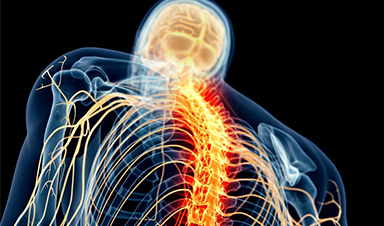Researchers have derived a new wave equation, linking wave mechanics with the general theory of relativity and the arrow of time, offering solutions to long-standing physics debates and introducing applications for novel materials.
Researchers at Tampere University and the University of Eastern Finland have reached a milestone in a study where they derived a new kind of wave equation, which applies to accelerating waves. The novel formalism has turned out to be an unexpectedly fertile ground for examining wave mechanics, with direct connections between accelerating waves, the general theory of relativity, as well as the arrow of time.
Light Interaction With Matter
Whenever light interacts with matter, light appears to slow down. This is not a new observation and standard wave mechanics can describe most of these daily phenomena.
However, at the boundary, the incident light must experience an acceleration. So far, this has not been accounted for.
“Basically, I found a very neat way to derive the standard wave equation in 1+1 dimensions. The only assumption I needed was that the speed of the wave is constant. Then I thought to myself: what if it’s not always constant? This turned out to be a really good question,” says Assistant Professor Matias Koivurova from the University of Eastern Finland.
By assuming that the speed of a wave can vary with time, the researchers were able to write down what they call an accelerating wave equation. While writing down the equation was simple, solving it was another matter.
“The solution didn’t seem to make any sense. Then it dawned on me that it behaves in ways that are reminiscent of relativistic effects,” Koivurova recounts.
Working together with the Theoretical Optics and Photonics group, led by Associate Professor Marco Ornigotti from Tampere University, the researchers finally made progress. To obtain solutions that behave as expected, they needed a constant reference speed – the vacuum speed of light. According to Koivurova, everything started to make sense after realizing that. What followed was an investigation of the surprisingly far-reaching consequences of formalism.
No Hope for a Time Machine?
In a breakthrough result, the researchers showed that in terms of accelerating waves, there is a well-defined direction of time; a so-called ‘arrow of time.’ This is because the accelerating wave equation only allows solutions where time flows forward, but never backward.
“Usually, the direction of time comes from thermodynamics, where an increasing entropy shows which way time is moving,” Koivurova says.
However, if the flow of time were to reverse, then entropy would start to decrease until the system reached its lowest entropy state. Then entropy would be free to increase again.
This is the difference between ‘macroscopic’ and ‘microscopic’ arrows of time: while entropy defines the direction of time for large systems unambiguously, nothing fixes the direction of time for single particles.
“Yet, we expect single particles to behave as if they have a fixed direction of time!” Koivurova says.
Since the accelerating wave equation can be derived from geometrical considerations, it is general, accounting for all wave behavior in the world. This in turn means that the fixed direction of time is also a rather general property of nature.
Relativity Triumphs Over the Controversy
Another property of the framework is that it can be used to analytically model waves that are continuous everywhere, even across interfaces. This in turn has some important implications for the conservation of energy and momentum.
“There is this very famous debate in physics, which is called the Abraham–Minkowski controversy. The controversy is that when light enters a medium, what happens to its momentum? Minkowski said that the momentum increases, while Abraham insisted that it decreases,” Ornigotti explains.
Notably, there is experimental evidence supporting both sides.
“What we have shown, is that from the point of view of the wave, nothing happens to its momentum. In other words, the momentum of the wave is conserved,” Koivurova continues.
What allows the conservation of momentum are relativistic effects. “We found that we can ascribe a ‘proper time’ to the wave, which is entirely analogous to the proper time in the general theory of relativity,” Ornigotti says.
Since the wave experiences a time that is different from the laboratory time, the researchers found that accelerating waves also experience time dilation and length contraction. Koivurova notes that it is precisely the length contraction that makes it seem like the momentum of the wave is not conserved inside a material medium.
Exotic Applications
The new approach is equivalent to the standard formulation in most problems, but it has an important extension: time-varying materials. Inside time-varying media light will experience sudden and uniform changes in the material properties. The waves inside such materials are not solutions to the standard wave equation.
This is where the accelerating wave equation comes into the picture. It allows the researchers to analytically model situations that were only numerically accessible before.
Such situations include an exotic hypothetical material called disordered photonic time crystal. Recent theoretical investigations have shown that a wave propagating inside the said material will slow down exponentially, while also increasing exponentially in energy.
“Our formalism shows that the observed change in the energy of the pulse is due to a curved space-time the pulse experiences. In such cases, energy conservation is locally violated,” Ornigotti says.
The research has wide-reaching implications, from everyday optical effects to laboratory tests of the general theory of relativity, while giving an idea of why time has a preferred direction.
Reference: “Time-varying media, relativity, and the arrow of time” by Matias Koivurova, Charles W. Robson and Marco Ornigotti, 19 October 2023, Optica.
DOI: 10.1364/OPTICA.494630
News
Specially engineered antibody delivers RNA therapy to treatment-resistant tumors
Elias Quijano, PhD; Diana Martinez-Saucedo, PhD; Zaira Ianniello, PhD; and Natasha Pinto-Medici, PhD, there are 25 other contributors, most from Yale's Department of Therapeutic Radiology and from the departments of genetics, molecular biophysics and [...]
Vaccinated women face fewer cervical cancer risks
New data from Denmark shows the HPV vaccine’s powerful long-term impact, while also revealing why cervical cancer screening is still essential. A Danish study published in the journal Eurosurveillance reports that women who received the human [...]
3D-printed implant offers a potential new route to repair spinal cord injuries
A research team at RCSI University of Medicine and Health Sciences has developed a 3-D printed implant to deliver electrical stimulation to injured areas of the spinal cord, offering a potential new route to [...]
Nanocrystals Carrying Radioisotopes Offer New Hope for Cancer Treatment
The Science Scientists have developed tiny nanocrystal particles made up of isotopes of the elements lanthanum, vanadium, and oxygen for use in treating cancer. These crystals are smaller than many microbes and can carry isotopes of [...]
New Once-a-Week Shot Promises Life-Changing Relief for Parkinson’s Patients
A once-a-week shot from Australian scientists could spare people with Parkinson’s the grind of taking pills several times a day. The tiny, biodegradable gel sits under the skin and releases steady doses of two [...]
Weekly injectable drug offers hope for Parkinson’s patients
A new weekly injectable drug could transform the lives of more than eight million people living with Parkinson's disease, potentially replacing the need for multiple daily tablets. Scientists from the University of South Australia [...]
Most Plastic in the Ocean Is Invisible—And Deadly
Nanoplastics—particles smaller than a human hair—can pass through cell walls and enter the food web. New research suggest 27 million metric tons of nanoplastics are spread across just the top layer of the North [...]
Repurposed drugs could calm the immune system’s response to nanomedicine
An international study led by researchers at the University of Colorado Anschutz Medical Campus has identified a promising strategy to enhance the safety of nanomedicines, advanced therapies often used in cancer and vaccine treatments, [...]
Nano-Enhanced Hydrogel Strategies for Cartilage Repair
A recent article in Engineering describes the development of a protein-based nanocomposite hydrogel designed to deliver two therapeutic agents—dexamethasone (Dex) and kartogenin (KGN)—to support cartilage repair. The hydrogel is engineered to modulate immune responses and promote [...]
New Cancer Drug Blocks Tumors Without Debilitating Side Effects
A new drug targets RAS-PI3Kα pathways without harmful side effects. It was developed using high-performance computing and AI. A new cancer drug candidate, developed through a collaboration between Lawrence Livermore National Laboratory (LLNL), BridgeBio Oncology [...]
Scientists Are Pretty Close to Replicating the First Thing That Ever Lived
For 400 million years, a leading hypothesis claims, Earth was an “RNA World,” meaning that life must’ve first replicated from RNA before the arrival of proteins and DNA. Unfortunately, scientists have failed to find [...]
Why ‘Peniaphobia’ Is Exploding Among Young People (And Why We Should Be Concerned)
An insidious illness is taking hold among a growing proportion of young people. Little known to the general public, peniaphobia—the fear of becoming poor—is gaining ground among teens and young adults. Discover the causes [...]
Team finds flawed data in recent study relevant to coronavirus antiviral development
The COVID pandemic illustrated how urgently we need antiviral medications capable of treating coronavirus infections. To aid this effort, researchers quickly homed in on part of SARS-CoV-2's molecular structure known as the NiRAN domain—an [...]
Drug-Coated Neural Implants Reduce Immune Rejection
Summary: A new study shows that coating neural prosthetic implants with the anti-inflammatory drug dexamethasone helps reduce the body’s immune response and scar tissue formation. This strategy enhances the long-term performance and stability of electrodes [...]
Scientists discover cancer-fighting bacteria that ‘soak up’ forever chemicals in the body
A family of healthy bacteria may help 'soak up' toxic forever chemicals in the body, warding off their cancerous effects. Forever chemicals, also known as PFAS (per- and polyfluoroalkyl substances), are toxic chemicals that [...]
Johns Hopkins Researchers Uncover a New Way To Kill Cancer Cells
A new study reveals that blocking ribosomal RNA production rewires cancer cell behavior and could help treat genetically unstable tumors. Researchers at the Johns Hopkins Kimmel Cancer Center and the Department of Radiation Oncology and Molecular [...]





















